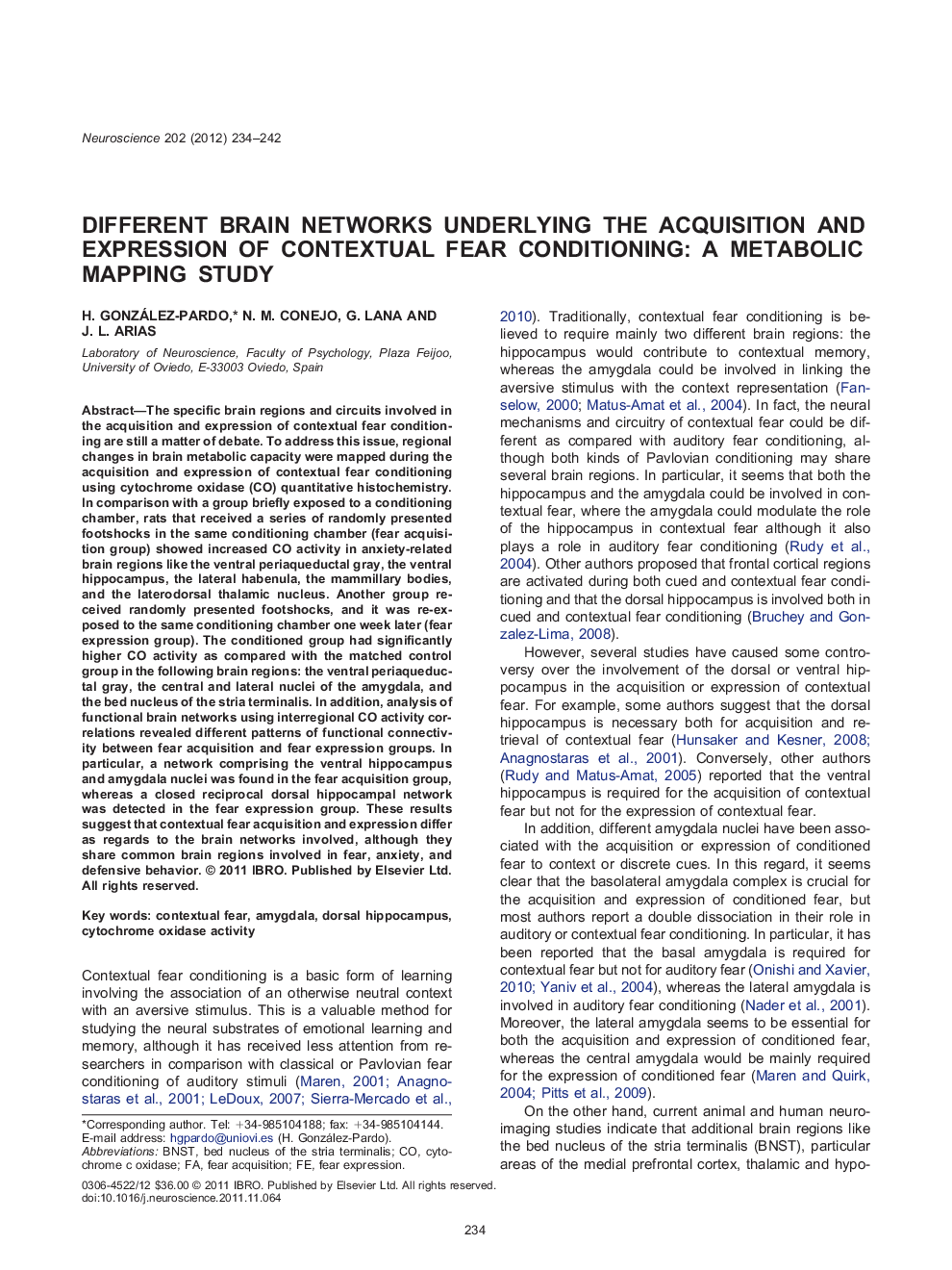| کد مقاله | کد نشریه | سال انتشار | مقاله انگلیسی | نسخه تمام متن |
|---|---|---|---|---|
| 6275855 | 1614874 | 2012 | 9 صفحه PDF | دانلود رایگان |

The specific brain regions and circuits involved in the acquisition and expression of contextual fear conditioning are still a matter of debate. To address this issue, regional changes in brain metabolic capacity were mapped during the acquisition and expression of contextual fear conditioning using cytochrome oxidase (CO) quantitative histochemistry. In comparison with a group briefly exposed to a conditioning chamber, rats that received a series of randomly presented footshocks in the same conditioning chamber (fear acquisition group) showed increased CO activity in anxiety-related brain regions like the ventral periaqueductal gray, the ventral hippocampus, the lateral habenula, the mammillary bodies, and the laterodorsal thalamic nucleus. Another group received randomly presented footshocks, and it was re-exposed to the same conditioning chamber one week later (fear expression group). The conditioned group had significantly higher CO activity as compared with the matched control group in the following brain regions: the ventral periaqueductal gray, the central and lateral nuclei of the amygdala, and the bed nucleus of the stria terminalis. In addition, analysis of functional brain networks using interregional CO activity correlations revealed different patterns of functional connectivity between fear acquisition and fear expression groups. In particular, a network comprising the ventral hippocampus and amygdala nuclei was found in the fear acquisition group, whereas a closed reciprocal dorsal hippocampal network was detected in the fear expression group. These results suggest that contextual fear acquisition and expression differ as regards to the brain networks involved, although they share common brain regions involved in fear, anxiety, and defensive behavior.
â¶Acquisition and expression of contextual fear differ in brain circuits involved. â¶The dorsal hippocampus is specifically involved in contextual fear expression. â¶Central and lateral amygdala nuclei are activated during contextual fear expression. â¶The BNST is activated after contextual fear expression. â¶The habenula and the hippocampus are associated with fear and anxiety.
Journal: Neuroscience - Volume 202, 27 January 2012, Pages 234-242